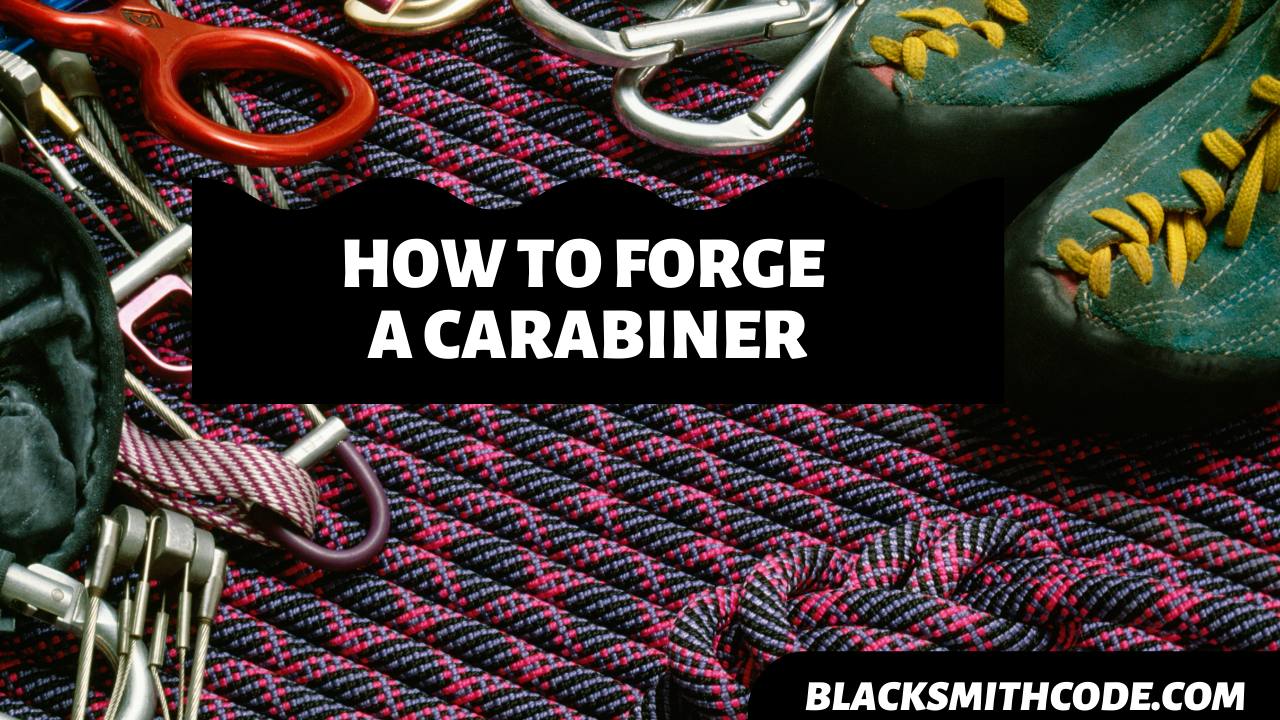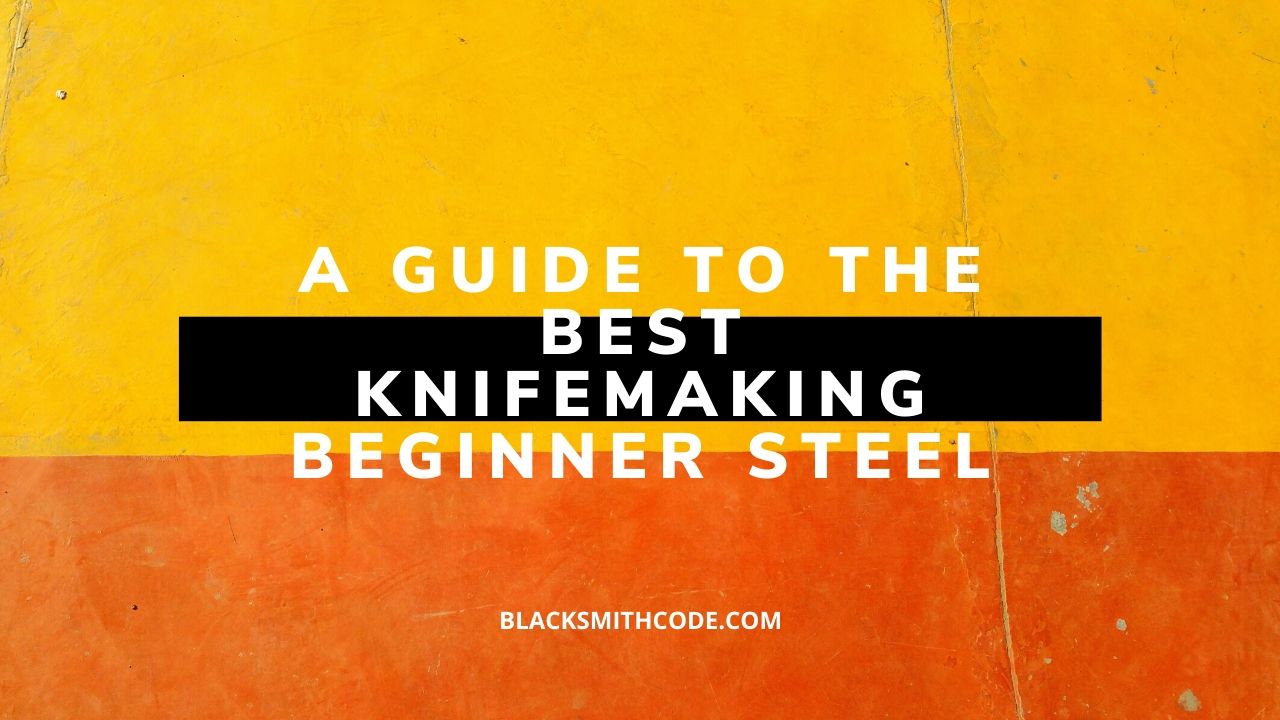Do you know blacksmiths contribute to the progress of rock climbers? They do so by forging carabiners that rock climbers use as a coupling link that has a safety closure. How you confused about how to forge a carabiner?
For you to forge these carabiners and provide assistance to the rock climbers, you have to be aware of the steps of forging the carabiner. You should not be surprised that the carabiner is very easy to forge.
A carabiner is an instrument that serves as a coupling link between two objects. Just to ensure its effectiveness, the carabiner has a safety closure that you can lock to prevent the objects from falling off.
If you intend to forge the carabiner, it would be best if you followed the steps and procedures of forging. As easy as it seems to forge the carabiner, the forging can also be complicated along the way.
Instructions on How to Forge a Carabiner
Step 1: Get Your Aluminum Rod
Before you start forging, you should get an aluminum rod. The rod should not be too long, and neither should it be too big. The size and length of the aluminum rod determine the size of your carabiner.
Step 2: Shape Your Rod
The rod has to take the shape of your carabiner. To make it take shape, you have to place the rod in a bowing machine.
The bowing machine hydraulically presses the rod into its shape. There are several other ways of shaping the rod but using the machine will reduce the stress and time spent on this stage.
Quicks Steps
Another method of shaping your rod includes;
- Get a clamp. Your clamp should be rigid and effective.
- Hold the rod with your clamp.
- Get a hollow tube made of metal. You will make use of the tube to bend the rod.
- Insert the rod into the tube and bend gently.
- Reposition the rod and bend it to the shape of your carabiner.
You should bend the rod to a roughly triangular shape with the end separated from each other a bit.
Step 3: Hot Forge Your Rod
After bending your rod to the shape of a carabiner, you have to hot-forge the rod in a forge. Propane forge is preferable to forge it.
You should heat the metal to about 450℃. This temperature will allow you to forge the rod with about 250 tons of pressure. This method is very easy when you are making use of a machine but stressful if you are doing it manually.
Quick Steps
When forging manually, you have to heat the rod to a very high temperature. After heating the rod;
- Retrieve the rod from the forge.
- Place in a mold. The mold will help create a shallow hole in some part of the rod. It is done by pressing a protruded part of the mold against the hot rod. The hot rod takes thee shape the mold gives it.
- After molding, retrieve the rod from the mold.
- You might have to beat the mold to force the shape on the rod.
Step 4: Heating and Quenching
After forging the rod, you have to reheat and quench the rod. To reheat, you should place the rod in a forge for a while for a long period. After heating, you should immerse the rod in water for quenching.
Step 5: Grinding
Grinding your forged rod might seem difficult because of its small size. But you can successfully grind it with less stress.
To grind your forged rod, you should place quite a number of them into a vibrating bowl. The vibrating bowl contains several cones made of ceramic. The cones rub against the rod; they grind the rod removing scales making the rod smooth.
This method is suitable for grinding many rods at the same time.
Step 6: Drill Holes for the Gauge
Before you can have a complete carabiner, the rod has to have a gauge. And for you to have the gauge, you have to drill holes that will help attach the gauge to the rod.
Step 7: Attach the Gauge
After drilling the hole, you should attach the gauge to the rod employing the drilled hole. The gauge serves as the safety closure that locks the carabiner.
Pro Tip
It should have a spring that returns it to its position whenever you press it. It might have a screw lock or any other type of lock available.
Step 8: Add Your Finishing Touch
The main finishing touch you can add to the forged carabiner is to paint it. You can paint the carabiner in the color of your choice. Always paint the carabiner in a shiny color.
FAQs on How to Forge a Carabiner
Question
Do I have to use aluminum instead of steel to forge my carabiner?
You do not have to use a precise metal to forge your carabiner? You can make use of other types of metal to forge it, but you should make use of aluminum because of its ease of forging.
Question
How strong is a carabiner?
The carabiner can be as strong as you want it to be. Rock climbers make use of carabiners to fasten them to the rocks. It shows how strong it can be if you forge the right way.
Question
Can I forge my carabiner from scrap metals?
Yes, you can forge your carabiner from scrap metals as long as you can forge the metal into the shape of the carabiner. You can forge the carabiner from any metal you want.
Video on How to Forge a Carabiner
Warnings
Here are some safety rules and precautions to follow when forging a carabiner.
- Always steer clear of the machine’s work path.
- Make sure you put on your safety apparel before working.
- Always put on safety footwear.
- Do not handle hot materials with your bare hands.
- Always put on your safety goggle.
References
1. https://youtu.be/xzUB6nYcYKg
2. https://www.youtube.com/watch?v=aHZSUrN75WQ
3. https://www.blackdiamondequipment.com/en/hotforge-screwgate-carabiner-BD210161_cfg.html
4. https://www.climbingtechnology.com/en/outdoor-en/carabiners
5. https://blog.weighmyrack.com/black-diamond-2020-carabiner-details/





